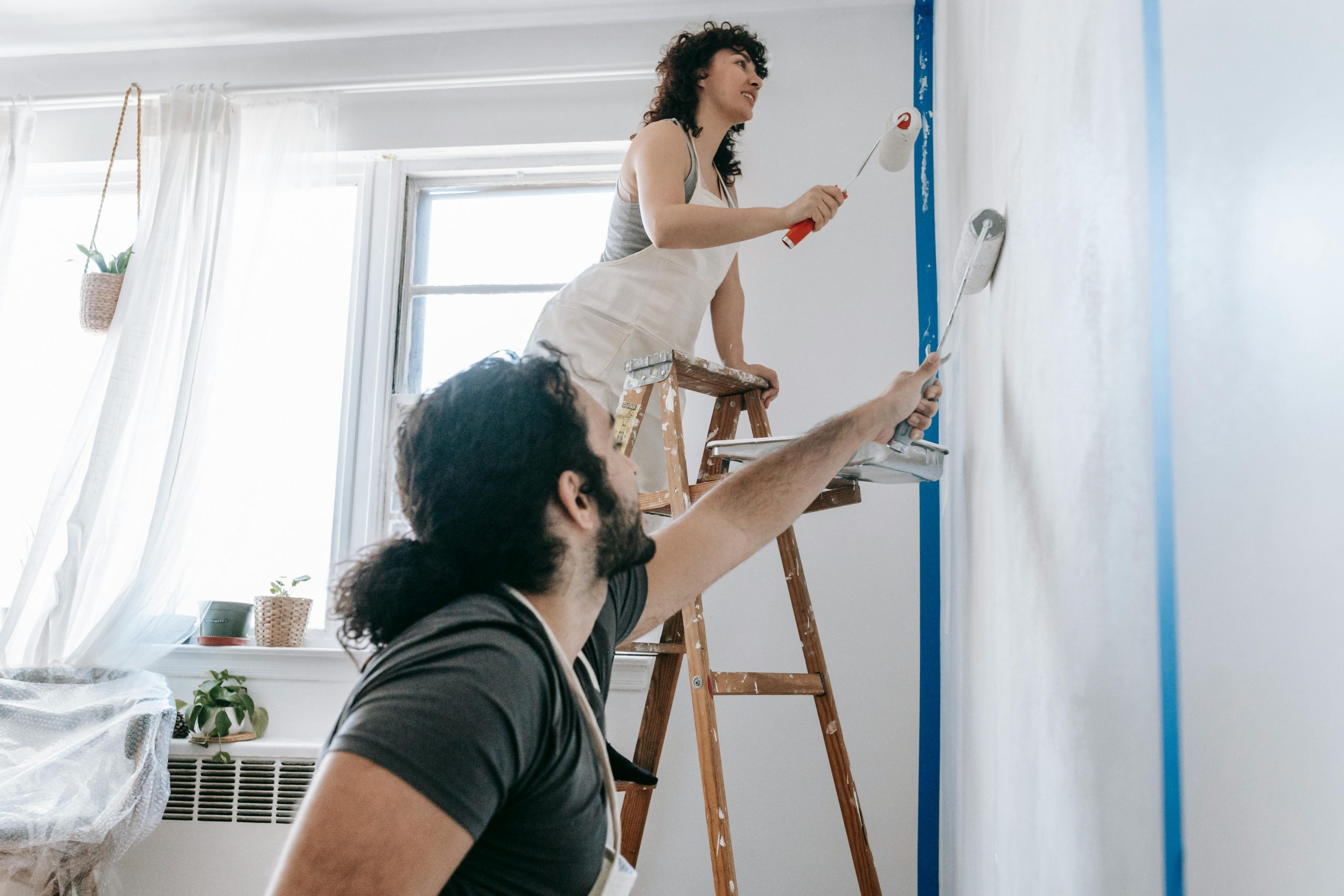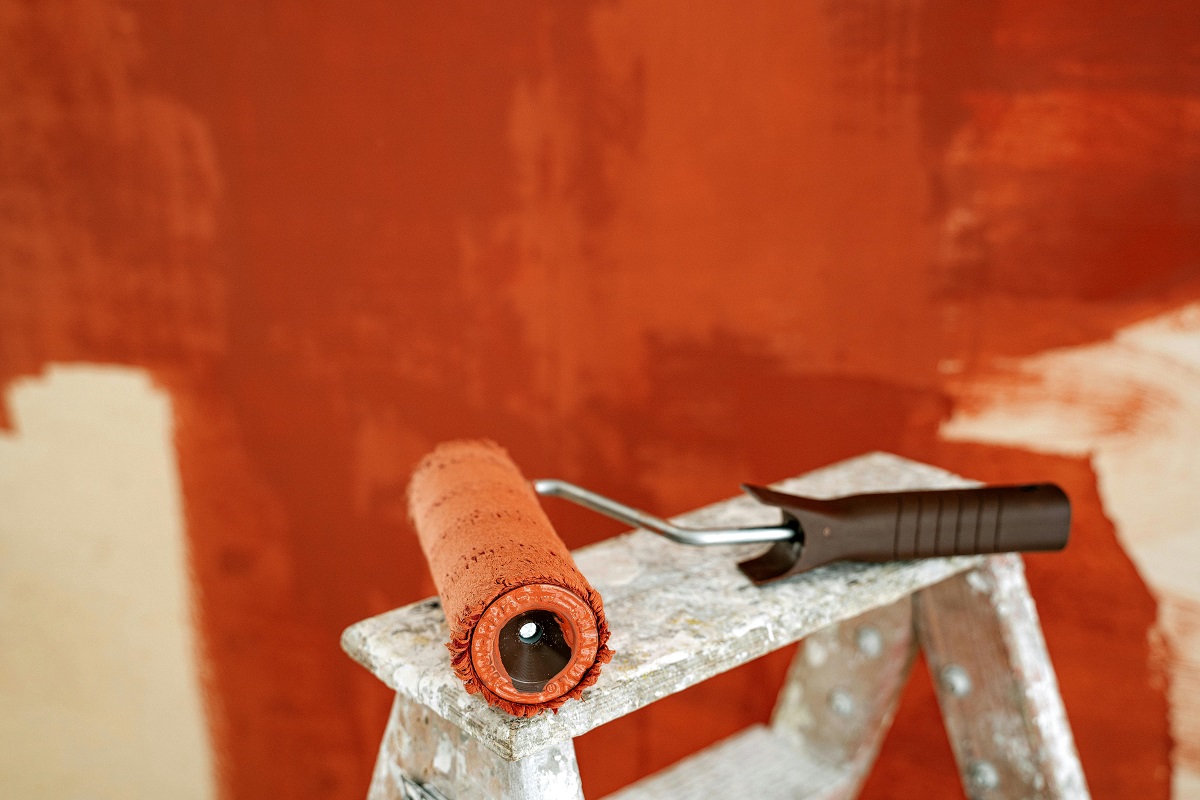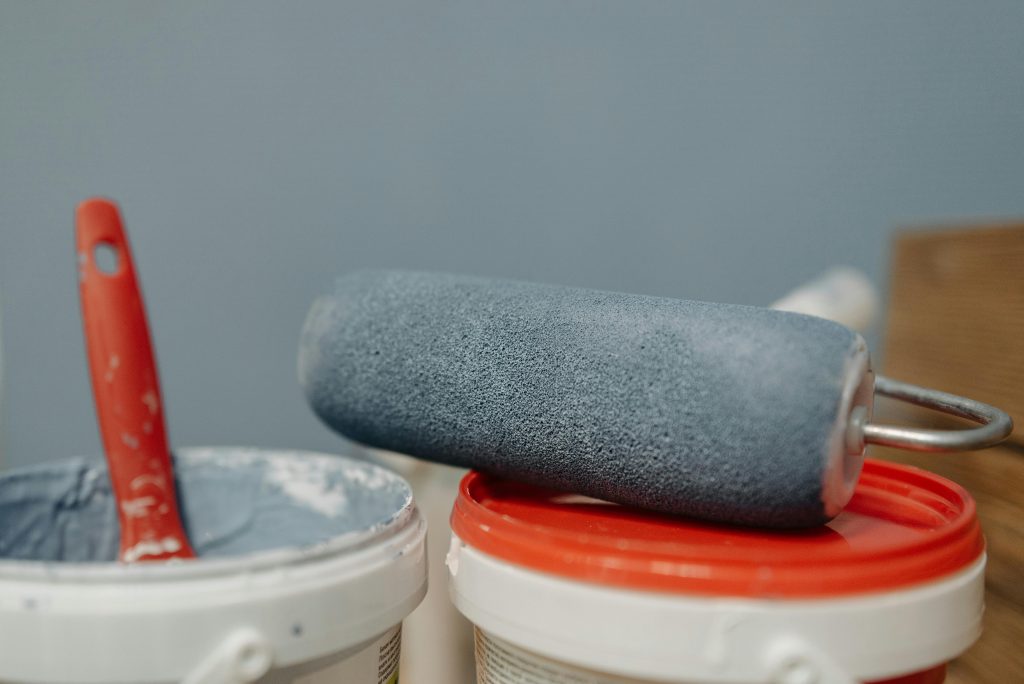
For budget-conscious homeowners, every can of paint counts—especially when you’re staring at leftover exterior paint and wondering: can you use exterior paint inside to save money? It’s a tempting idea. After all, paint is paint, right?
Not exactly.
While using exterior paint indoors might seem like a smart shortcut, there are several important factors to consider—ranging from cost-effectiveness and safety to durability and finish. In this guide, we’ll break it all down so you can decide if this budget move is worth it.
What’s the Difference Between Exterior and Interior Paint?
Before diving into whether or not it’s safe or smart to use exterior paint inside your home, it helps to understand how these two types of paint differ.
Here’s a quick breakdown:
Exterior Paint
- Designed to withstand weather, moisture, UV rays, and temperature fluctuations.
- Contains additives like mildewcides and fungicides for protection.
- Typically has more volatile organic compounds (VOCs), which release fumes as the paint dries.
Interior Paint
- Made for a more controlled environment—free from rain, wind, and constant sun exposure.
- Lower in VOCs, which makes it safer for indoor air quality.
- Easier to clean and touch up.
Bottom line: Exterior paint is tougher, but it’s also chemically stronger—and not always in a good way when it comes to indoor air safety.
Why Would You Want to Use Exterior Paint Inside?

Here are some common reasons homeowners consider using exterior paint indoors:
- You have leftover paint from an exterior project and don’t want to waste it.
- You’re painting a low-traffic area like a garage, basement, or storage room.
- You’re looking for extra durability or moisture resistance in areas like bathrooms or laundry rooms.
- You’re trying to stretch your renovation budget as far as possible.
It makes sense to ask the question. But let’s talk about what you might be trading off in the process.
Can You Use Exterior Paint Inside Safely?
Short Answer: Not Really—Especially in Living Spaces
Exterior paint is formulated to release gases slowly over time. That’s fine outside, where those fumes can dissipate into the air. But indoors, those gases get trapped, especially in rooms with poor ventilation.
This process—called “off-gassing”—can continue for weeks or even months after the paint dries.
Health Risks of Using Exterior Paint Inside Include:
- Headaches
- Dizziness
- Respiratory issues
- Eye and throat irritation
- Aggravation of allergies or asthma
For children, seniors, and anyone with health sensitivities, exposure to VOCs from exterior paint indoors can be a serious concern.
Where Might It Be Okay to Use Exterior Paint Indoors?
If you’re still considering it, here are some low-risk indoor areas where using exterior paint may be more acceptable—though caution is still advised:
- Garage interiors
- Tool sheds or workshops
- Unfinished basements
- Outdoor-facing utility rooms
These spaces often have better airflow or aren’t used regularly as living areas, which reduces exposure risk.
Still, it’s critical to ventilate well during and after painting. Use fans, open windows, and wear a mask during application.
Will You Actually Save Money?
This is the big question for budget-conscious homeowners.
If you’ve recently tackled an outdoor project and calculated how much to paint house exterior, you might be looking for ways to stretch your materials. Reusing leftover exterior paint indoors can seem like a clever way to save—especially if the color still works for your space.
Here are some pros and cons from a financial perspective:
Pros of Using Exterior Paint Indoors
- Reduces waste if you already own the paint.
- Avoids purchasing new paint for utility areas or low-traffic zones.
- May require fewer coats in some situations due to thicker coverage.
Cons of Using Exterior Paint Indoors
- Can’t return unused paint once the can is open (wasted money if unused).
- Additional ventilation equipment may be needed (extra cost).
- Health-related costs from exposure could outweigh any savings.
- May void warranties on paint or impact resale inspections if used improperly.
So, does it save money? Only if:
- You already have the paint,
- You’re using it in a space that won’t affect indoor air quality,
- And you’re aware of the trade-offs.
Better Budget-Friendly Alternatives

If you want to stay frugal without compromising your indoor air quality, here are smarter options:
1. Shop the “Oops” Paint Section
Many home improvement stores sell deeply discounted paints that were mixed incorrectly or returned by customers. These are brand-new and safe for indoor use—just possibly not the exact shade you planned.
2. Use Primer Strategically
Primer can help less-expensive paints cover better and last longer, cutting down on how much paint you actually need.
3. Mix Leftover Interior Paints
If you have several partial cans of interior paint, consider mixing them to create a neutral tone for closets or utility areas.
4. Buy in Bulk
Gallon-sized or 5-gallon buckets are more cost-effective than quarts. Plan your project in advance so you can buy paint more efficiently.
What the Experts Say
Paint manufacturers and home safety organizations don’t recommend using exterior paint inside. Here’s why:
- Sherwin-Williams: Exterior paints are designed for external exposure. Indoor use is not recommended due to potential health hazards.
- Benjamin Moore: Advises against using exterior paint in enclosed areas for safety and performance reasons.
- EPA & Indoor Air Quality Guidelines: VOCs released from exterior paint indoors may exceed recommended safe levels.
In other words—most pros say it’s not worth the risk, especially when safer, affordable alternatives exist.
What to Do If You’ve Already Used Exterior Paint Indoors
If you’ve already used exterior paint inside, here’s how to minimize any potential issues:
- Ventilate the area daily for a few weeks after painting.
- Use an air purifier with a VOC filter to reduce harmful compounds.
- Avoid sleeping or spending long hours in the room until the paint has fully cured.
- Consider repainting with interior paint in sensitive areas if possible.
Final Verdict: Use Caution Before Cutting Costs
So—can you use exterior paint inside to save money? Technically, yes. But in most cases, it’s not worth the health risks or long-term trade-offs. The short-term savings can easily be wiped out by potential problems down the road.
Instead, opt for budget-friendly interior paint options, shop smart, and plan ahead to stay on budget without compromising your home’s safety or comfort.
